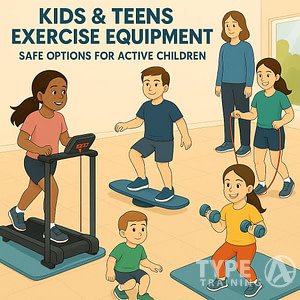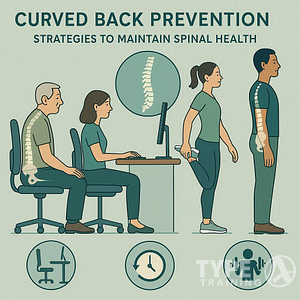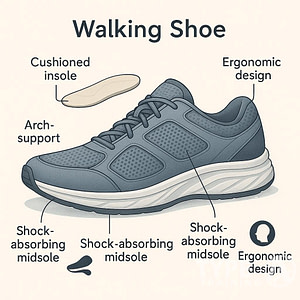Corporate fitness programs have become increasingly popular in recent years. Companies are realizing that investing in the health and wellness of their employees can have a positive impact on the bottom line. By promoting physical activity and healthy habits, employers can reduce healthcare costs, boost productivity, and improve employee morale.
(image credit: springworks.com)
Teamwork is also an essential component of a successful business. When employees work together effectively, they can achieve more than they would individually. Team building activities can help improve communication, collaboration, and trust among team members. By incorporating corporate fitness into team building activities, employers can create a fun and engaging way for employees to work together while also promoting physical activity and healthy habits.
Popular posts:
In this post, we will explore the benefits of combining workplace wellness programs with teamwork activities. We will examine how these programs can improve employee health, increase work productivity, and strengthen team dynamics. We will also provide examples of successful corporate fitness and teamwork initiatives, as well as practical tips for implementing these programs in your workplace.
Understanding Workplace Wellness & Teamwork
Corporate fitness and teamwork are two essential components of a successful workplace. By integrating physical activity into the workplace and promoting a culture of teamwork, companies can improve the health and well-being of their employees, increase productivity, and create a more positive work environment.
The Concept of Workplace Wellness
Workplace Wellness programs aim to combat the negative effects of sedentary work lifestyles and promote a healthier and more active workforce. These programs typically involve providing employees with access to on-site or off-site fitness facilities, exercise classes, wellness activities, and incentives to participate in physical activity.
By encouraging employees to engage in physical activity, corporate fitness programs can help reduce stress, improve cardiovascular health, prevent musculoskeletal disorders, and boost overall well-being. Additionally, these programs can help employees feel more energized, focused, and motivated, leading to increased productivity and job satisfaction.
The Role of Teamwork in Workplace Wellness
Teamwork is an essential component of successful corporate fitness programs. By fostering a culture of teamwork, companies can create a supportive environment that encourages employees to participate in physical activity and work together to achieve their fitness goals.
Teamwork can take many forms in corporate fitness programs. For example, companies can organize group fitness classes, team challenges, or wellness events that encourage employees to work together and support each other in their fitness journeys. Additionally, companies can provide incentives for teams that achieve certain fitness goals or milestones, further promoting a culture of teamwork and collaboration.
By integrating corporate fitness and teamwork into their workplace culture, companies can create a more positive and productive work environment, improve employee health and well-being, and ultimately achieve greater success.
Encouraging a Culture of Fitness and Teamwork
To foster a positive company culture, it is important to encourage a culture of fitness and teamwork. This can help to promote camaraderie, motivation, and loyalty among employees. By integrating fitness goals into the workplace, you can create a shared wellness value that unites employees and builds a sense of community.
Motivating Employees for Fitness
Motivating employees to participate in fitness activities can be a challenge, but it is essential for building a healthy and productive workforce. One effective way to motivate employees is to offer incentives for participation, such as gift cards, extra time off, or fitness-related merchandise. Recognizing milestones such as reaching a certain number of steps, attending a certain number of fitness classes, or completing a fitness challenge can also be a great way to motivate employees.
Shared wellness values unite employees
Building a culture of fitness and teamwork requires a shared commitment to wellness. By promoting healthy habits and fitness activities, you can create a sense of shared purpose and values among employees. This can help to build a strong sense of community and promote a positive company culture.
Building Camaraderie Through Fitness Challenges
Friendly competition can be a great way to build camaraderie and team spirit. Fitness challenges such as step challenges, fitness class challenges, and walking meetings can help to promote healthy competition and team building. By recognizing and rewarding the efforts of employees, you can build a culture of recognition and positive feedback that promotes engagement and morale.
Fitness activities build morale and engagement, and can be a great way to promote teamwork and camaraderie among employees. By integrating fitness goals into the workplace, you can create a shared wellness value that unites employees and builds a sense of community. With the right incentives and recognition, you can motivate employees to participate in fitness activities and build a positive company culture that promotes health and wellness.
Relationship Building
One of the most significant benefits of a corporate fitness program is the relationships it builds among employees. By working out together, your team members can get to know each other better and develop stronger connections. Here are two sub-sections that explore how social events and conversations during exercise can help break down silos and spark new connections.
Social events during workouts break down silos
Social events during workouts can be an excellent way to break down silos and build camaraderie among team members. By participating in group fitness classes or team-building activities, employees can bond over shared experiences and develop a greater sense of teamwork. These events can also create a more relaxed atmosphere where employees can let their guard down and get to know each other on a personal level.
Consider organizing a company-wide fitness challenge or sponsoring a team to participate in a charity run or walk. These types of events not only promote fitness but also provide opportunities for employees to bond and build relationships outside of the office.
Conversations during exercise spark new connections
Conversations during exercise can spark new connections and foster deeper relationships among team members. During a workout, employees can chat about a variety of topics, from work-related challenges to personal interests and hobbies. These conversations can help break down barriers and create a more open and collaborative workplace culture.
Consider offering group fitness classes or lunchtime walks where employees can exercise and socialize together. These types of activities provide a relaxed environment where employees can engage in casual conversations and get to know each other better.
In conclusion, a corporate fitness program can help build stronger relationships among team members. By organizing social events and encouraging conversations during exercise, you can break down silos and spark new connections that can translate into more productive and collaborative work relationships.
Developing Trust
(image credit: achievers.com)
Trust is an essential element of teamwork, and it can be cultivated through fitness activities. When you exercise together, you build a sense of camaraderie and shared experience that can translate to the workplace. Here are two ways that fitness can help develop trust in your team.
Goal setting and accountability in fitness transfers to work
When you work out with a group, you often set goals together and hold each other accountable. For example, you might agree to run a 5k together and commit to a training plan. By doing this, you develop a sense of trust in each other’s ability to follow through on commitments.
This same principle can apply to the workplace. By setting shared goals and holding each other accountable, you can build trust in each other’s ability to get things done. When you know that your colleagues are reliable and committed to a common goal, you can trust them to do their part.
Vulnerabilities shared in exercise translate to work vulnerabilities
Exercise can be a vulnerable experience. You might feel self-conscious about your fitness level or worry about being judged by others. When you exercise with a group, you have the opportunity to share these vulnerabilities and support each other.
This same vulnerability can translate to the workplace. When you share your weaknesses and challenges with your colleagues, you create a sense of trust and openness. By acknowledging that you don’t have all the answers and asking for help when you need it, you create a culture of trust and collaboration.
In summary, fitness activities can be a powerful tool for developing trust in your team. By setting shared goals and holding each other accountable, and by sharing vulnerabilities and supporting each other, you can build a sense of camaraderie and trust that will translate to the workplace.
Facilitating Communication
Effective communication is crucial for successful teamwork. Team building activities can help build connections between team members, create lasting bonds, and enable better teamwork and working practices. However, facilitating communication goes beyond just holding meetings and team building activities.
Comfort discussing wellness transfers to work topics
Encouraging open communication about wellness can help team members feel more comfortable discussing other work-related topics. When team members feel comfortable discussing their health and wellness, they are more likely to feel comfortable discussing other topics that may be uncomfortable or sensitive. This can lead to more productive conversations and a more cohesive team.
Fitness provides low-stakes way to practice public speaking
Fitness activities can also provide a low-stakes way to practice public speaking. Group fitness classes or team sports can provide a comfortable environment for team members to practice speaking in front of others. This can help team members build confidence and improve their communication skills, which can translate to better communication in the workplace.
Overall, facilitating communication is essential for successful teamwork. Encouraging open communication about wellness and providing opportunities for team members to practice their communication skills can lead to a more cohesive and productive team.
Enhancing Collaboration
Collaboration is key to a successful workplace, and corporate fitness can play a significant role in fostering teamwork and enhancing collaboration. By encouraging employees to work together towards common fitness goals, corporate fitness programs can help build trust, improve communication, and promote a positive work culture. Here are some ways corporate fitness can enhance collaboration:
Cross-training builds understanding of other roles
Cross-training is an excellent way to build understanding and appreciation of other roles within the company. By participating in cross-training activities, employees can gain a better understanding of the skills and challenges of their colleagues, which can lead to improved communication and collaboration. For example, a sales team member who participates in a cross-training session with the marketing team can gain valuable insights into the marketing strategy and tactics, which can help them work more effectively together towards common goals.
Competitions require interdepartmental coordination
Corporate fitness competitions are a great way to promote interdepartmental coordination and teamwork. By participating in team-based fitness challenges, employees can learn to work together towards a common goal, regardless of their department or role within the company. For example, a company-wide step challenge can encourage employees from different departments to work together towards a common goal, which can lead to improved communication and collaboration.
In conclusion, corporate fitness programs can play a significant role in enhancing collaboration in the workplace. By encouraging cross-training and team-based fitness competitions, companies can promote teamwork, build trust, and foster a positive work culture.
Frequently Asked Questions
What are some benefits of implementing corporate wellness programs in the workplace?
Corporate wellness programs can have a positive impact on both employees and the company as a whole. By promoting healthy habits, such as regular exercise and healthy eating, these programs can lead to improved physical and mental health, reduced absenteeism, and increased employee morale. They can also help companies attract and retain top talent, as well as reduce healthcare costs in the long run.
Which companies offer incentives for employees to exercise?
Many companies offer incentives for employees to exercise, such as gym memberships, fitness classes, and wellness challenges. Some examples include Google, which offers on-site fitness centers and classes, and Nike, which provides subsidized gym memberships and fitness reimbursements.
How can fitness in the office improve employee productivity?
Regular exercise can improve cognitive function, reduce stress, and boost energy levels, all of which can lead to increased productivity in the workplace. Encouraging employees to take breaks to stretch or exercise can also help prevent burnout and improve overall job satisfaction.
What are some examples of employee wellness benefits?
Employee wellness benefits can include a variety of offerings, such as gym memberships, fitness classes, health coaching, mental health resources, and healthy food options. Some companies may also offer incentives for participating in wellness programs or achieving certain health goals.
How does regular exercise help with team building and collaboration?
Regular exercise can help build camaraderie and trust among team members, as well as improve communication and collaboration skills. Participating in fitness challenges or group workouts can also provide opportunities for team bonding and foster a sense of community within the workplace.
Should companies allow employees to exercise during work hours?
Allowing employees to exercise during work hours can have many benefits, such as increased productivity and reduced stress levels. However, it is important for companies to set clear guidelines and expectations around when and how employees can exercise, in order to avoid disruptions to work schedules and ensure that all employees have equal access to fitness opportunities.











